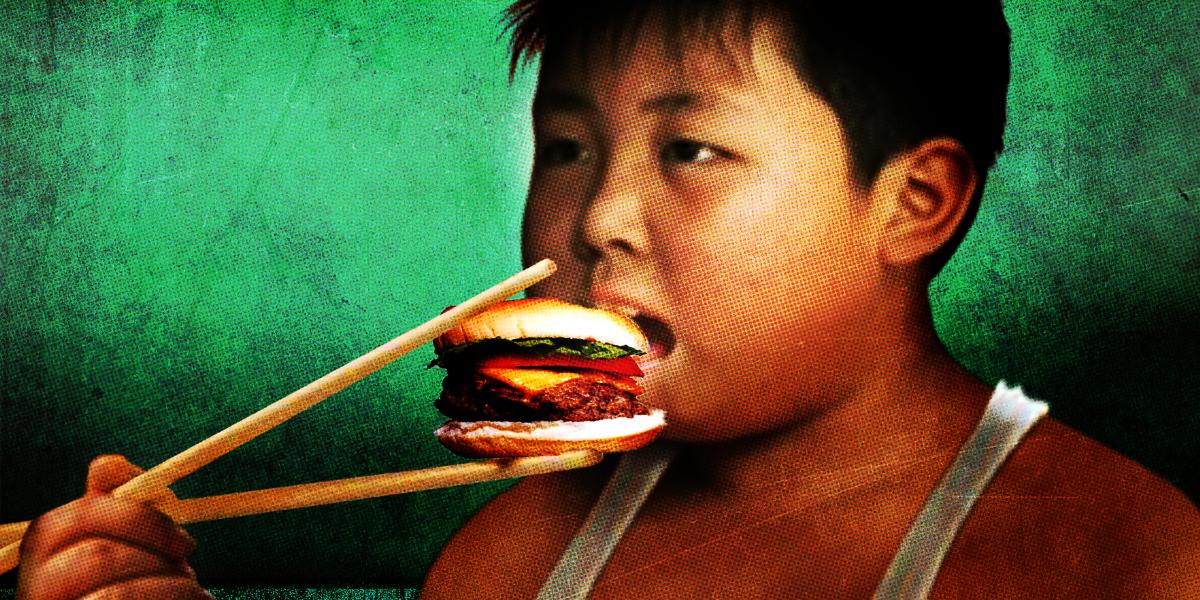Obesity Goes Global
As other countries join the U.S. in dealing with fast-rising obesity rates, researchers are investigating new ways to reduce a common epidemic with location-specific differences.
The underlying problem, according to health policy expert Sara Bleich, is that “we live in an environment that makes it very hard to stay thin.”
In China, changing lifestyles are fueling an obesity epidemic that rivals the U.S. in absolute numbers, says nutritionist Youfa Wang. Improved living standards and migration to big cities are factors in China’s average 1 percent increase per year in the overweight and obesity rates there since 1992. Unlike the U.S., however, the well-off and better-educated Chinese—not the poor—are bulking up. “They can afford to have more sedentary lifestyles and better access to higher calorie foods,” says Wang. “There is not as much opportunity for them to engage in exercise.”
Wang is currently developing an Internet- and cell phone-based intervention among middle school students in China to promote healthy eating. “Cell phones are very common in China, even for kids,” he says. He is also working with collaborators in China to adapt a school-based intervention study (which modifies the physical and social environments in schools) that he first tested in schools in low-income Chicago neighborhoods. That study showed promising results in lowering students’ body fat measures.
In China, lower levels of physical activity are correlated with heavy pressure for academic excellence and with better access to mass transit and automobiles, which have been cutting into bicycle use among the Chinese.
Meanwhile, in the U.S., obesity-related health problems tend to be linked to poverty, not wealth. Though more than one-third of all American adults are obese and 60 percent are overweight, deaths due to cardiovascular disease are 40 percent higher among African-Americans, an association that many researchers believe has more to do with socioeconomic status than with genetics.
As an example, the fattest ZIP codes in the country are the poorest neighborhoods with the lowest density of supermarkets. “People living closer to a supermarket have better dietary intake and lower BMI scores than people who live farther away,” says nutrition expert Benjamin Caballero.
In Baltimore and cities like it, many low-income minority residents shop at corner grocery stores where healthy food choices are limited—one reason why obesity and diet-related chronic diseases affect such populations at a higher rate than the general population. “If you have money,” says Caballero, “you have can make healthier choices.”
In an effort to expand healthy food choices, medical anthropologist Joel Gittelsohn enlisted Korean corner store owners in Baltimore in a five-phase research program focused on increasing consumption of low-sugar, high-fiber cereals and low-fat milk, whole wheat bread, low-fat or fat-free mayonnaise, and water and diet soda, rather than regular soda. “We’ve done it in a sustainable way by showing store owners they can increase their sales of these foods,” he says.
He has obtained similar results in studies with Native Americans and Pacific Islanders. “We’ve shown that the Healthy Stores program works in many different settings.”
Some low-income people living in urban areas consume as much as 50 percent of their daily caloric intake at carry-outs and other eateries outside the home.To encourage consumers to make healthier choices, Bleich recently completed a national survey on calorie posting in chain restaurants. She found that mandating such postings may be a useful policy tool for promoting health, particularly among blacks, Hispanics and women who have higher obesity risk.
In a new study, she will target consumption of sugar-sweetened beverages among black adolescents in Baltimore City to determine what type of message will have a greater impact on teens’ purchases of sweetened drinks. “These kids drink buckets of soda,” she points out—imbibing 350 to 400 extra calories a day—a number she hopes to shrink.
Rich or poor, black or white, it isn’t easy for most Americans to maintain a healthy diet today, she says. “The environment is working against us. Biology is working against us.”
